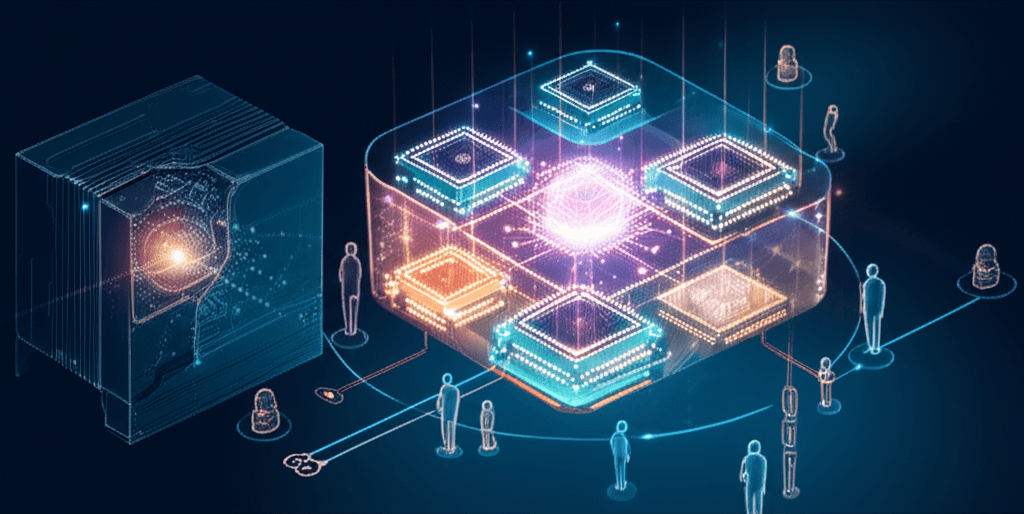Grindr Rejects Single AI, Unleashes "gAI" for Tailored Community Experience
Transforming Grindr: A multi-model AI platform leverages unique data for a "gay-specific" experience, enhancing safety and privacy.
August 25, 2025

In a strategic pivot transforming it from a dating service into a technology-driven platform, Grindr is betting its future on a sophisticated and flexible approach to artificial intelligence. At the heart of this strategy is a core belief articulated by CEO George Arison: no single AI model can adequately serve all the company's diverse and evolving needs. This multi-model philosophy signals a significant shift for the company, known for its location-based interface, as it delves deeper into AI to enhance user engagement, safety, and monetization, reflecting a broader trend in the tech industry where companies are opting for a bespoke suite of AI tools over a one-size-fits-all solution.
Arison’s declaration against reliance on a single AI provider underscores a pragmatic view of the current artificial intelligence landscape.[1] The reasoning is multifaceted, touching on performance, cost, and privacy.[2] He posits that the AI space is evolving so rapidly that today's best-performing model may be tomorrow's runner-up.[1] By building a flexible infrastructure, Grindr can avoid vendor lock-in and dynamically integrate the most effective models for specific tasks, whether from established players like OpenAI and Anthropic or emerging open-source alternatives.[3][2] This approach allows the company to balance the unique strengths of different Large Language Models (LLMs); one model might excel at natural language understanding for conversational features, while another might be more efficient and cost-effective for content moderation or data analysis.[4] The strategy is also deeply rooted in privacy concerns, a paramount issue for a platform with users in nearly 190 countries, some of which have laws that criminalize its community.[5] By working with services like Amazon Bedrock, Grindr can keep user data within its own virtual private space, ensuring it is not used to train external models.[5][6]
This multi-model strategy is not merely theoretical; it is the foundation of Grindr's proprietary "gAI" platform, a three-layer system designed to create a more nuanced and "gay-specific" user experience.[3] The first layer consists of foundational models from partners like OpenAI and Anthropic.[3] The crucial second layer is Grindr's own architectural system, which leverages the company's vast and unique dataset—including over 130 billion user chats annually—to create a specialized understanding of user behavior and communication patterns within the LGBTQ+ community.[3] The final layer is the application of these insights into user-facing features.[3] The first major product to emerge from this system is "A-List," a feature for premium subscribers that uses AI to summarize chat histories and prioritize conversations with high potential, helping users reconnect with promising matches they may have lost track of.[3][2] This tool aims to solve a common user pain point of managing numerous simultaneous conversations and move beyond simple geographic proximity in matchmaking.[2][7]
The implications of this AI-native approach extend across the entire Grindr platform and its business operations. Beyond matchmaking, the company utilizes machine learning for critical safety and moderation functions, proactively flagging profiles that violate community guidelines and assisting human moderators in combating fraudulent activity.[8] Arison has also spoken about developing an AI "wingman" to help users with conversations and identify potential long-term partners, demonstrating a push toward fostering deeper connections.[9][10] Internally, Grindr is leveraging AI to boost productivity, with Arison noting that a significant percentage of the company's code is now AI-generated.[1][5] This technological overhaul is central to Grindr's financial strategy, creating new avenues for monetization through premium AI features, which are being carefully rolled out to manage the high costs of implementation.[2] By limiting initial access to paying subscribers, the company can offset expenses while testing and refining these new tools, a common strategy in the dating app industry.[2]
In conclusion, Grindr's deliberate decision to embrace a multi-model AI strategy represents a sophisticated understanding of the current technological landscape and the specific needs of its community. Under George Arison's leadership, the company is moving to build a competitive moat based not on a single technology, but on a flexible, data-rich ecosystem that can adapt to the rapid pace of AI innovation.[11] This approach allows Grindr to enhance user experience with tailored features, strengthen safety protocols, and develop new revenue streams while maintaining crucial control over user privacy. As the AI industry continues to mature, Grindr’s blueprint of leveraging a diverse toolkit of specialized models may prove to be a prescient strategy for other companies navigating the complex transition to an AI-first future.
Sources
[3]
[4]
[5]
[7]
[8]
[9]
[10]
[11]